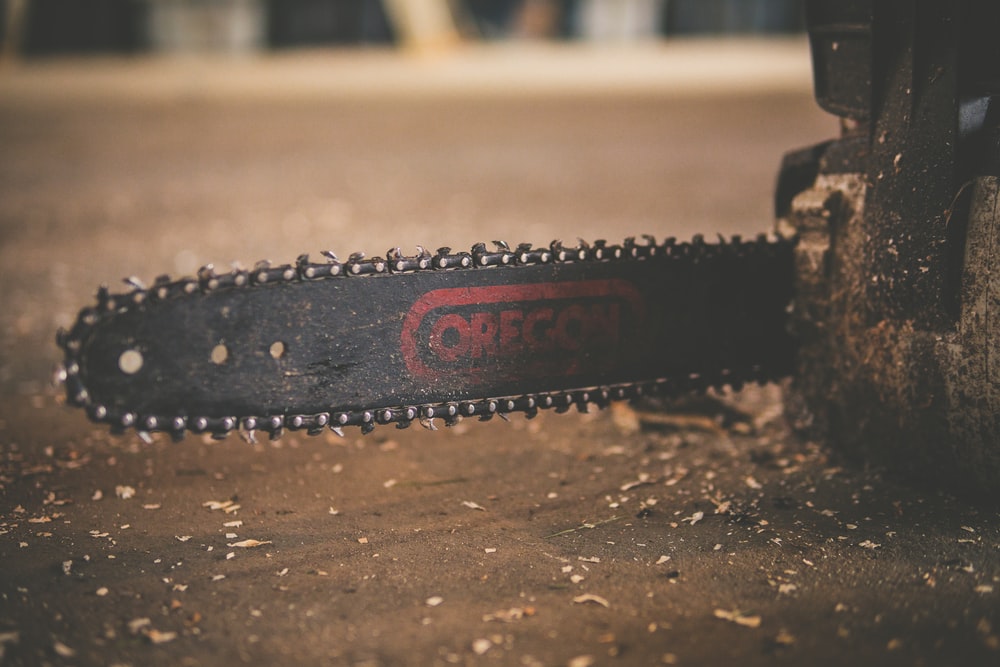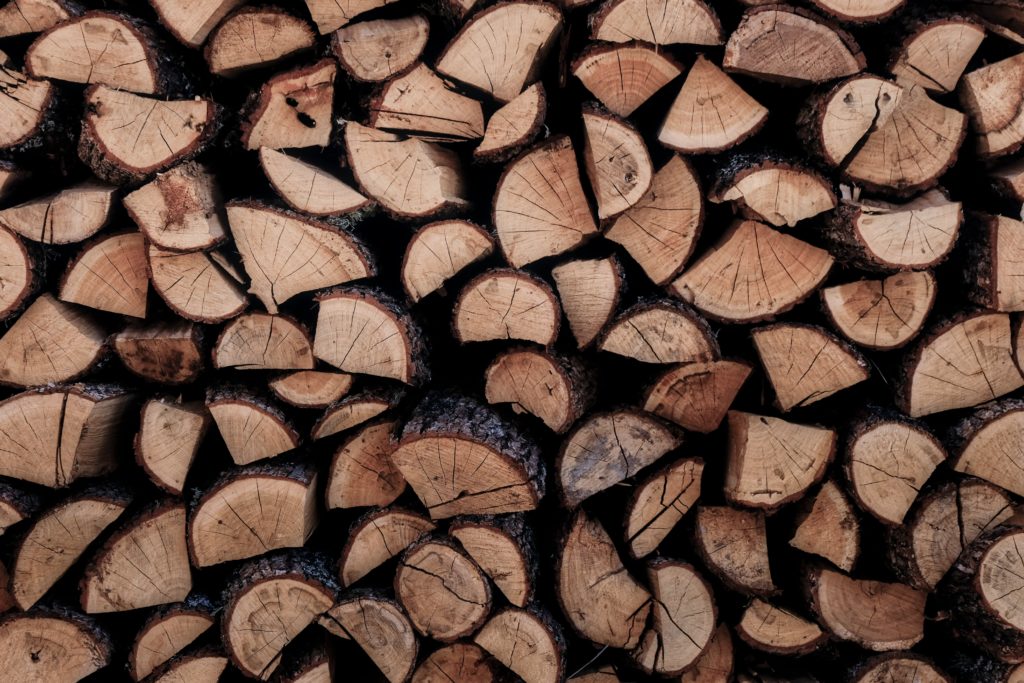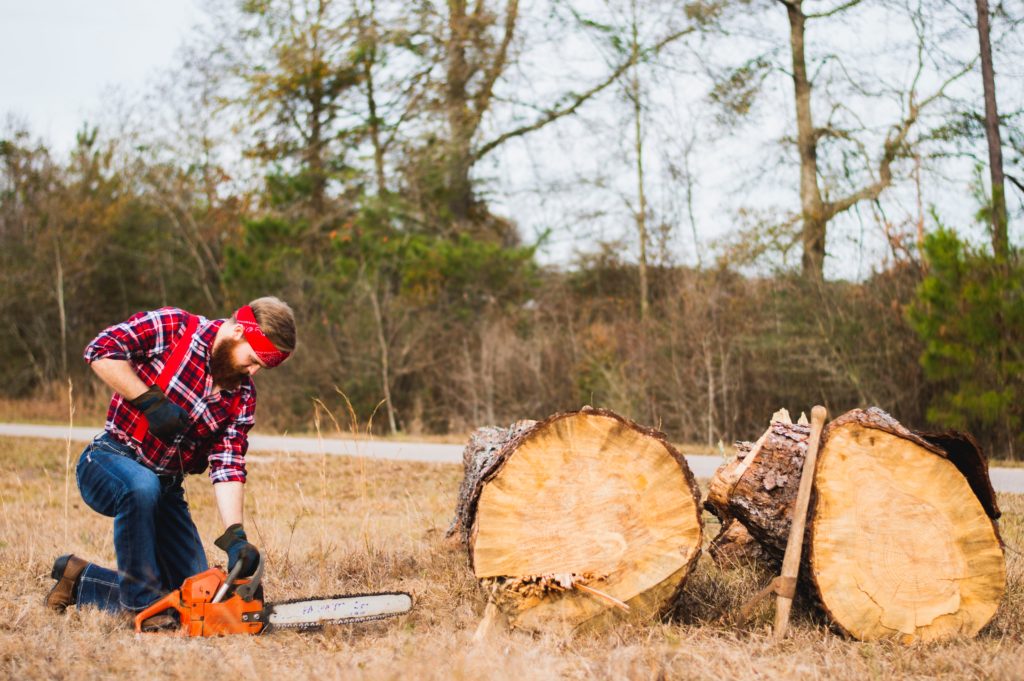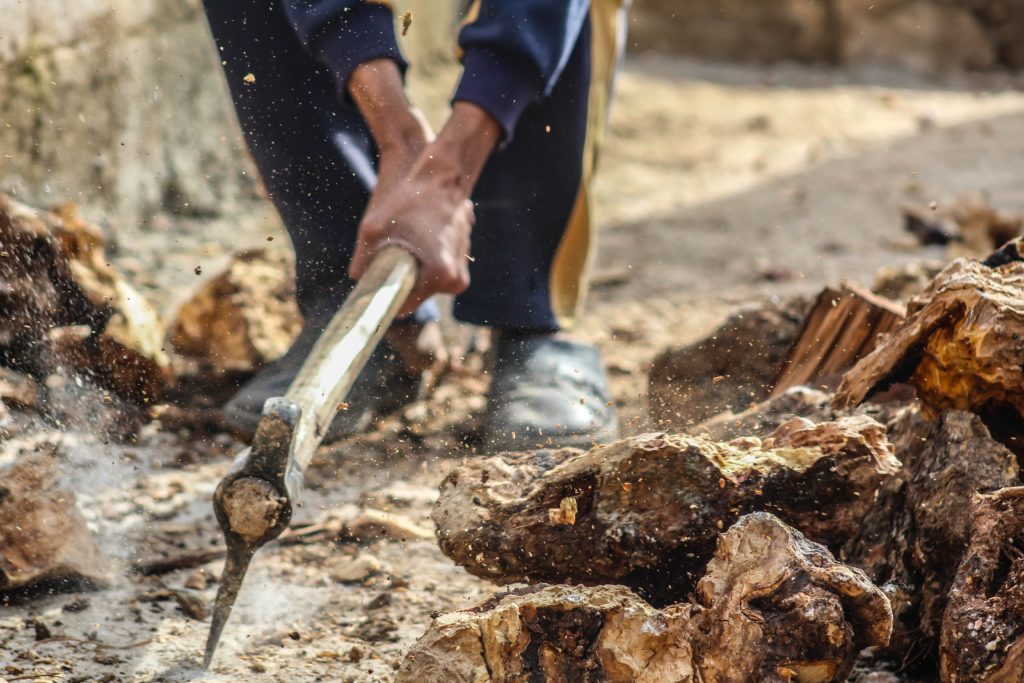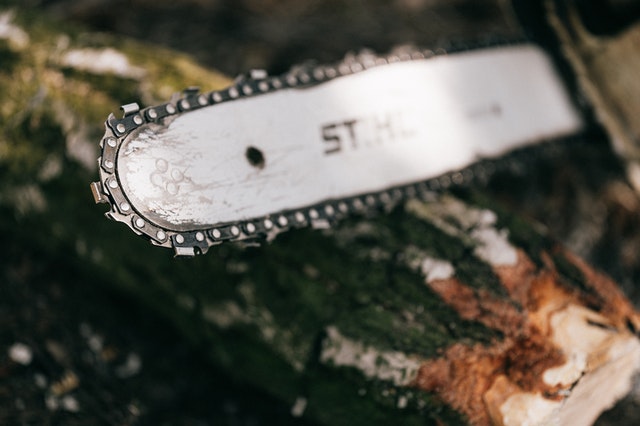Like any power tool, your chainsaw needs regular maintenance to perform efficiently. That is why it is crucial to ensure your blade is as sharp as ever as you use a chainsaw to chop up some wood. If the chainsaw teeth are dull, your power tool won't be of any good to you.
With the help of some affordable equipment, you can sharpen your slow-cutting chainsaw and get it sharp and running in no time. You can enjoy years of use as you keep your blade in shape with a simple chainsaw sharpener. This post will tell you everything you need to know about sharpening your chainsaw with a file.
Contents
How to Sharpen a Chainsaw with A File Guide
An easy and convenient way to sharpen your chainsaw chain is with a file guide. A file guide refers to a comprehensive tool with in-built flat files, round files, and a file depth gauge. While this manual technique could seem tedious and slow, it is an effective method of giving chainsaw chains a decent cutting edge.
Tip: If you see dust rather than chips while using your chainsaw, it probably means it's time to sharpen the cutters.
1. What You Need
You will need the following items to sharpen a chainsaw properly
- A round file of the same diameter as your cutter
- A depth-gauge guide to reset the depth gauge setting
- A file guide that you can use to hold the file at an even depth while you file every cutter
- A flat file
2. Understanding Your Chainsaw Blade
The first thing you need to check is the cutters on your chainsaw. You can easily sharpen and reshape the semi-circular cutting edges with a round file. Each cutter has a depth gauge (raker), a piece of metal that is shorter than the cutter, which controls how deep the teeth cut into the wood.
After sharpening a chainsaw repeatedly, the cutters can shorten to the depth gauge level, which prevents the chainsaw blade from cutting. Fortunately, you can lower the level of the depth gauges using a flat-file and guide.
3. Preparing to Sharpen Your Chainsaw
Before you start to sharpen a chainsaw chain, engage the chain brake and find a safe space to clamp the chainsaw bar using a vise. You'll also want to ensure the chain is tight by adjusting the screws until you reach the desired tension.
The clamp will help keep the power saw to prevent shifting while sharpening the chain, which could lead to injury. Place the file guide between the chain rivets and make sure the arrows on the guide point to the nose of the saw bar.
The guide rollers will prevent you from getting too deep into the cutter's side plate as you follow the top plate angle. Also, the file diameter of your round file should be equal to that of the gauges.
4. Maintain the proper filing angle
Attach the round file to the guide and hold it at a right angle to the guide bar. The holder will help you maintain the proper angle, which you'll use to sharpen each cutter. You can find specific information on the sharpening angle in the owner's manual.
Place the chainsaw bar in a wedge inside a log to secure it. Then, mark the first tooth you'll sharpen to make it easy to keep track of your progress on the chainsaw sharpening process. Alternatively, you could look for the distinguishing features on the cutting teeth to help direct you as you sharpen the chain.
5. Sharpening the saw chain
Hold the file-handle while placing the file on the blade and push the file into the cutting tooth from the inside in a forward motion. It's essential to file from the inside edge to the outside of each cutter.
You need to maintain a forward direction at the proper angle since moving the file backward will damage the chain saw cutters and the file. Your strokes should be parallel to the ground and should move away from your body.
With five or six strokes on each cutting tooth, maintain steady pressure until the cutting edge looks shiny. If it doesn't, it is probably still blunt and won't do much cutting. Make sure you line the cutter up with the file guide as you sharpen the chainsaw chain.
6. Advancing the Chain
Once you finish one cutter set, release the chain brake and rotate the saw chain to access the next cutters, and use the same number of strokes on each. Reset the brake and sharpen each second tooth from the marked one until you're done sharpening the cutters on one side of the chain.
Tip: As you move the chain, ensure you are wearing gloves for protection. However, some contact with the cutters could help you know when they get sharp enough when filing.
7. Turn the Chainsaw 180 degrees
When you reach the first cutting tooth you marked, loosen the clamp and rotate your chain-saw bar 180 degrees to ensure you sharpen the teeth cutters of the opposite angle. If you notice any cutters you missed, you can now use the same steps to sharpen them with the round file to ensure all the teeth on your chainsaw chain are sharp.
8. Check the Height of the Depth Gauge
Check the depth gauge height with the guide as you sharpen the cutting teeth. If the gauges are above the guide, you should use a flat-file to level them down.
The filing gauge will determine the extent you should file each rake as you rotate the chain to access the next set. When you're done, lose up your chain and try out your sharpened chainsaw.
Tip: If your cutters are damaged or severely dented, you should let a professional regrind them into shape before sharpening.
The Bottom Line
The slowest and most dangerous way to cut wood is to use a dull chainsaw chain since the kickback it causes can easily result in injury or damage. Moreover, when the blade is blunt, the fuel consumption goes up since your machine needs more power to handle easy tasks.
You don't have to stay at the mercy of a faulty blade or call professionals for assistance. With the steps in this post, sharpening your chainsaw chain can be an easy task that you can complete in minutes. Once done, you'll see just how well your chainsaw cuts through piles of wood.
